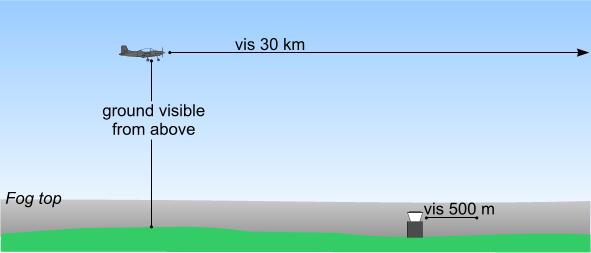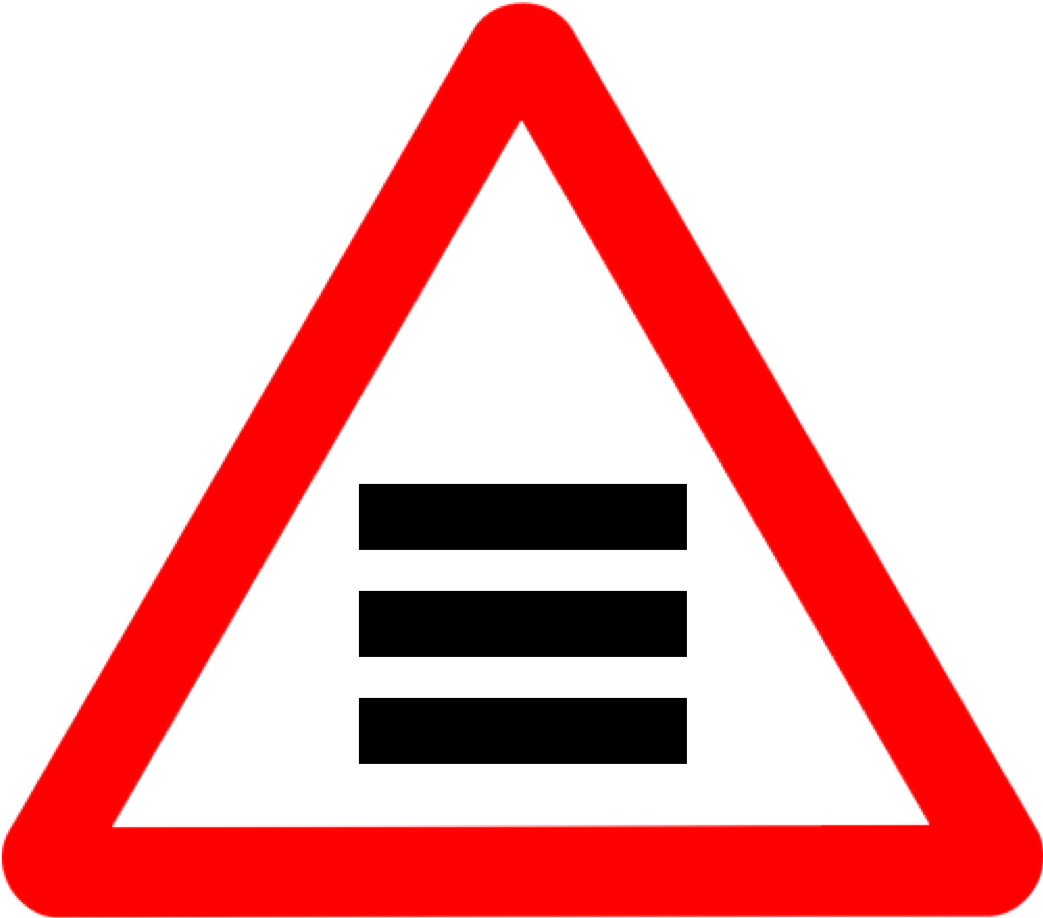Aviation | Hazards | Low Visibility and Low Cloud
Fog
Fog is the suspension of microscopic droplets of water with diameter approximately 10 µm or less, or in the case of ice fog, particles of ice. For aviation purposes, it is a condition that the horizontal visibility due to such phenomena is reduced to less than 1000 m.
Fog may be further classified as being formed by advective processes or radiative cooling processes. Hill fog and frontal fog are also descriptors commonly used.
Fog may cover a large, continuous area or it may form in patches possibly only covering small parts of an airfield. If the fog layer is less than 2 metres deep over land it is termed shallow fog.
Fog seriously degrades visibility to such a degree that landing may be impossible. Only the most sophisticated of aircraft (Civil Airliners/military aircraft) may be able to ‘auto land’ under such circumstances, and then only at suitably equipped airports. Even allowing for the technical ability, airline and military procedures may prohibit ‘auto landings’ under certain conditions.
Ice fog has similar visibility restrictions, but in addition untreated taxiways and runways may be coated with a thin layer of ice.

Pilots may be given a false sense of security when over-flying an airfield, since structures and runways may be quite clear to the pilot when looking down from directly above the airfield. However, when descending onto the approach, and trying to view the airfield at a slant angle through the fog, the pilot may very quickly lose all visual cues and find themselves in very serious difficulty.
Low Cloud and Poor Visibility
Low cloud and poor visibility may be overlooked as being potentially hazardous. They are also quite difficult to define since they will depend upon aircraft type, pilot skill and experience, the precise role the aircraft is performing, and the navigation aids available en route or at the departure/destination/alternate airfields.
Whilst the precise values may differ under the many varied possibilities, perhaps low cloud and poor visibility might best be described as having values that fall below the operating minima of either or both that of the aircraft and pilot.
Small amounts of low cloud (e.g. 1 or 2 oktas) may not generally be hazardous. As cloud amounts increase, then the risk to aircraft also increases. That noted, even a small patch of low cloud may cover a small peak (indeed may be caused by the peak).
Poor visibility may likewise only affect small areas (in the form of showers, or in fog patches), and may be caused for many reasons (rain, mist, haze, smoke etc.). Under such circumstances a pilot may be able to ‘navigate around’ the problems. Conversely, reductions to visibility can and often do affect very large areas and as such dealing with the problem can be much more difficult.
When cloud base and/or visibility fall below acceptable values, the pilot is in a situation where there will not be sufficient time to take avoiding action should an obstacle be sighted. That obstacle may be natural (hill, or simply the ground), a structure (building/tower), or another aircraft. To that end, collisions are possible. Pilots who are not qualified to use instruments, or flying poorly equipped aircraft, may become disorientated when confronted with poor visibility and/or low cloud.
Elevated layers of haze can mislead pilots, since reported (and correct) values of visibility are those assessed horizontally at the surface. The pilot flying in the haze layer does not perceive the visibility to be as good as reported.
When a pilot is flying above a low-level haze layer (which may affect the surface), the pilot will often be able to see further than the reported airfield visibility. On such occasions the pilot may be led into a false sense of security, and on descending into the haze layer suddenly find that their visibility is much reduced.
CLICK HERE to return to our homepage

